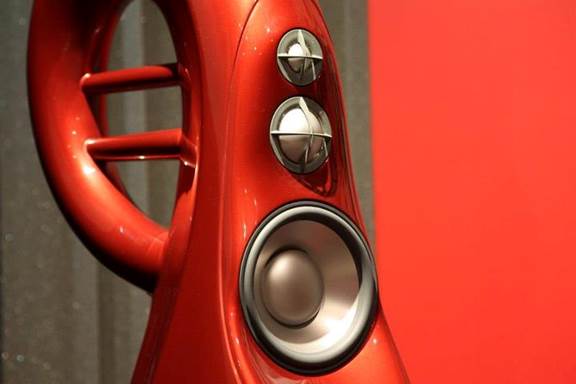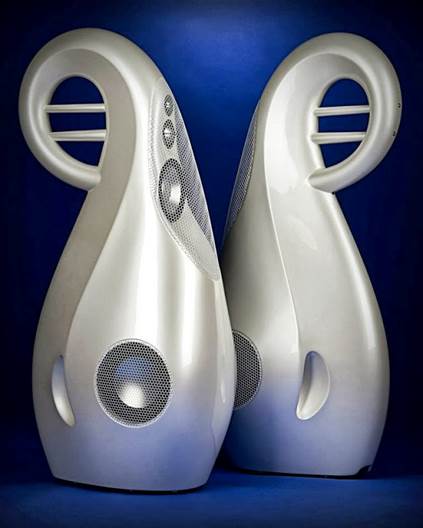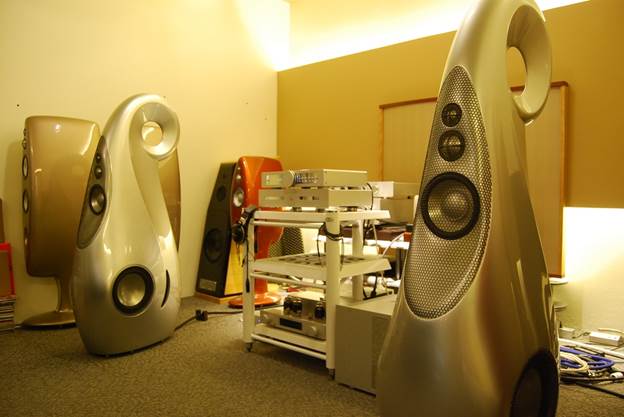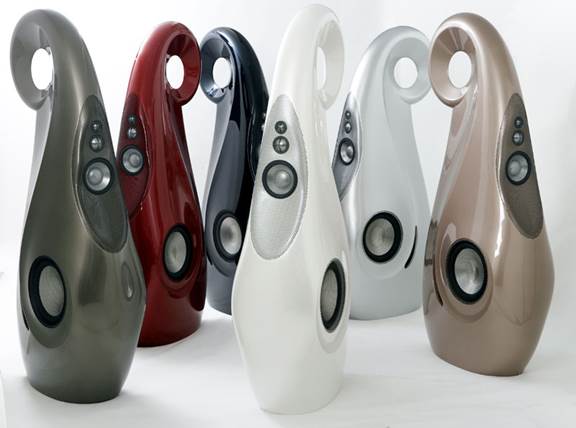For reasons that remain mysterious, I missed the English
band XTC in their early-1980s heyday, but my friend Casey McKee recently
decided to remedy that situation by sending me three of their CDs. (Thanks,
Casey.) How could I have missed XTC? The band had such a distinctive, heavily
lyrical, post-punk voice, unlike anything else at that time or since. The
repeated 16th-note bass-and-drum pattern in “Making Plans for Nigel,” from
Drums and Wires (ALAC file ripped from CD, Caroline 24385 06532), was
reproduced with impressive clarity and rhythmic drive. And Andy Partridge’s
very English way with words in “Senses Working Overtime,” from English
Settlement (ALAC file ripped from CD, Caroline 24385 06602), was laid out with
superb clarity by the MBL-driven G3s.
The G3 did indeed have a magic way with voices, whether it
was Dame Janet Baker’s rich contralto in Elgar’s Sea Pictures, with Sir John
Barbirolli and the London Symphony (24/96 ALAC file transcoded from FLAC, EMI/HDtracks);
the all-male choir in my recording of Daniel Gawthrop’s setting of Tennyson’s
“There Is Sweet Music,” from Cantus’s While You Are Alive (24/882 AIFF master
file for CD, Cantus CTS-1208); Carl Wilson’s flawless yet characterful tenor in
“The Trader,” from the Beach Boys’ Holland (24/192 needle drop from LP,
Brother/Reprise K54008); or even British actor Peter Jones as The Book in the
original BBC radio broadcast of Douglas Adams’s The Hitchhiker’s Guide to the
Galaxy (320kbps AAC rips from cassette airchecks) - all sounded maximally
different from one another and maximally like themselves.

Pink noise sounded smooth and
seamless when I sat with my ears on the Giya G3S’ tweeter axes.
“Something sounding like itself” may sound too much like a
self-referential solipsism, but I have long thought that the errors committed
not only by loudspeakers, but by audio systems in general, result in what might
be described as noise modulation (if you define as “noise” everything that
isn’t the original audio signal, such as distortion and resonant vibrations).
The errors form sonic hash that rides along with the music - a system-dependent
formant structure, if you will, that tends to fill in the aural spaces between
what should be distinctly separate acoustic objects. This becomes a gray scrim
that reduces the listener’s ability to differentiate between those objects. I
believe that it is the absence of this music- related hash that Linn’s Ivor
Tiefenbran described three decades ago as what makes it possible for an audio
system to “play tunes.”
Tiefenbrun was ridiculed back then on the grounds that there
is nothing an audio component can do to change the frequencies of audio
signals. However, if you consider that the kind of signal-dependent noise I am
talking about could well affect the differentiation of musical pitches - pitch
being an internal construct that isn’t related exclusively to frequency - he
has a point. And it was in this area that Vivid’s Giya G3 excelled. As I wrote
above, acoustic objects sounded maximally like themselves through these
speakers - with the exception of the low bass, where the G3’s signature was a
bit too good to be true.

The tapered tubes that load the
tweeter and upper-midrange unit extend to meet the woofers' line.
The sound of one speaker speaking
Before I wrote this review, one of the Vivids had to be
shipped to our longtime cover photographer, Eric Swanson. So as I committed my
thoughts to a Word file, I relistened to some of the same recordings mentioned
above, this time with just one of the two channels played through the remaining
Giya G3. Listening to a single speaker is a viciously hard test for it to pass.
The bloom added to the experience by stereo reproduction and the creation of a
virtual reality between, behind, and around the speakers distract the listener
from what can be fundamental problems in a speaker’s tonal balance. Colorations
that might go unremarked with a stereo pair of speakers arc unmasked by
listening to a single unit.
Yet the Giya G3 did very well in this exposed situation.
Male voices, female voices, solo piano - all were reproduced with no obvious
colorations and with a full frequency balance. And while the G3’s phat low end
remained audible, it didn’t interfere with the music. In fact, because a pair
of speakers gives enhanced bass reproduction in a room, due to mutual coupling,
a model with a slightly exaggerated low end will have an advantage when just
one sample is playing.

I immensely enjoyed the time I spent
with this idiosyncratically styled loudspeaker.
On the other hand, classical orchestral recordings suffered,
because a stereo recording made with a natural miking philosophy loses too much
spatial information when played with only one channel played through only one
speaker. Peculiarly, this was more true of modern recordings, such as Zander’s
Maliler 2, than of those made in the Golden Era, such as Herbert von Karajan
and the Berlin Philharmonic’s 1977 performance of Sibelius’s Symphony 5 (ALAC
file ripped from CD, EMI CDM 7 69244 2). Good rock recordings remained
enjoyable, however. In fact, I ended up playing a lot of early “Ping-Pong
stereo” recordings - eg, the early Beatles albums - because such details as the
character of the reverb used on the now-missing solo vocal became readily identifiable,
given the G3’s clarity.
Summing Up
Following on the heels of the $48,500/pair Wilson Alexia,
which I highly recommended in my December 2013 review, Vivid’s Giya G3 was
going to have to be something special to earn my respect. It did more than
that. I immensely enjoyed the time I spent with this idiosyncratically styled
loudspeaker. Yes, at $39,990/ pair, it is expensive, but for that money you get
a combination of transparency and, rich low bass aside, almost full-range
neutrality, coupled with superbly precise imaging and an easy-on-the-ear yet
revealing balance that proved addictive.
I ended my review of the Wilson by declaring that if I were
to retire tomorrow, the Alexia would be the speaker I would buy to provide the
musical accompaniment to that retirement. Now I would have to choose between it
and Vivid Audio’s Giya G3!

With Giya G3, you get a combination
of transparency and, rich low bass aside, almost full-range neutrality